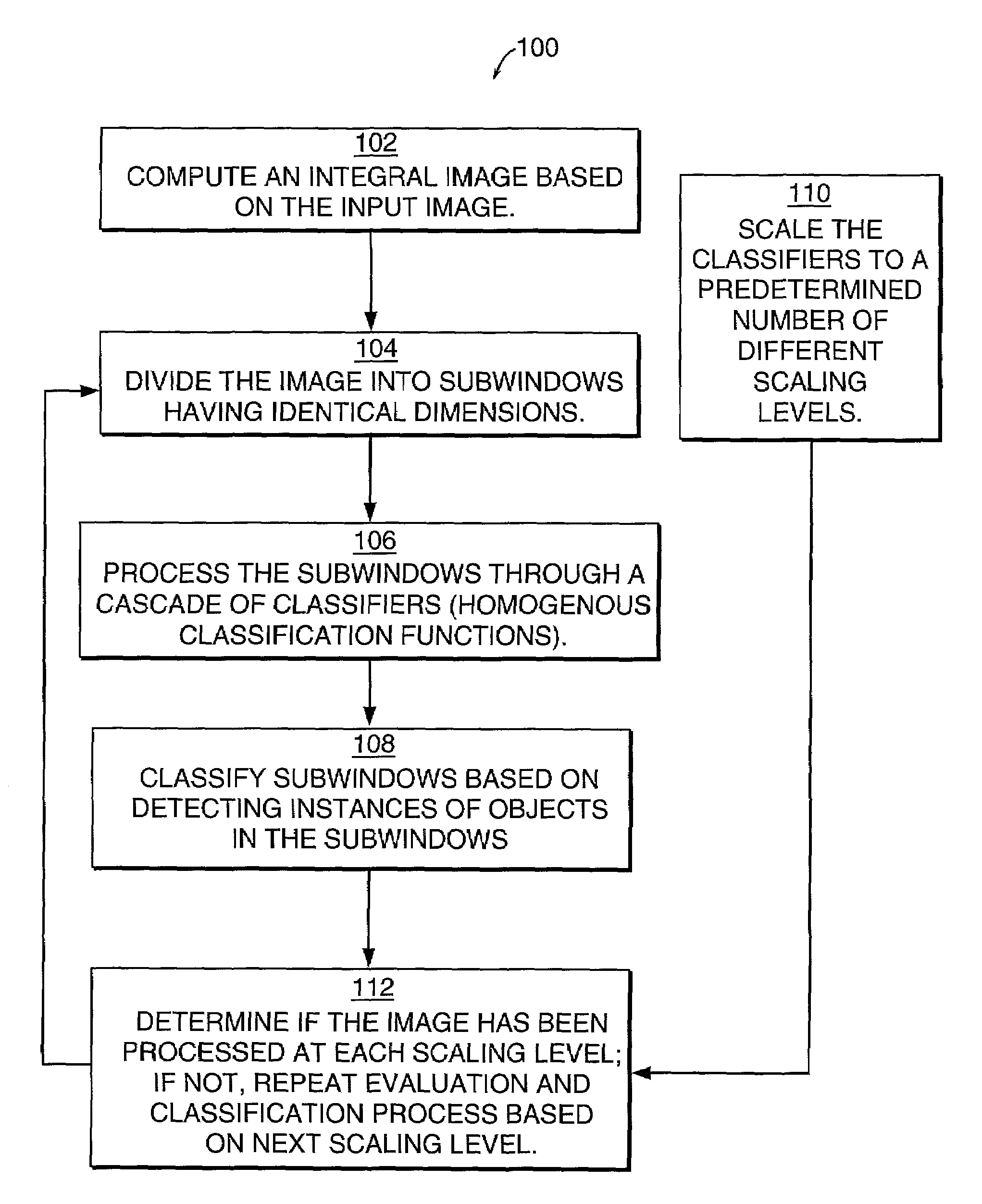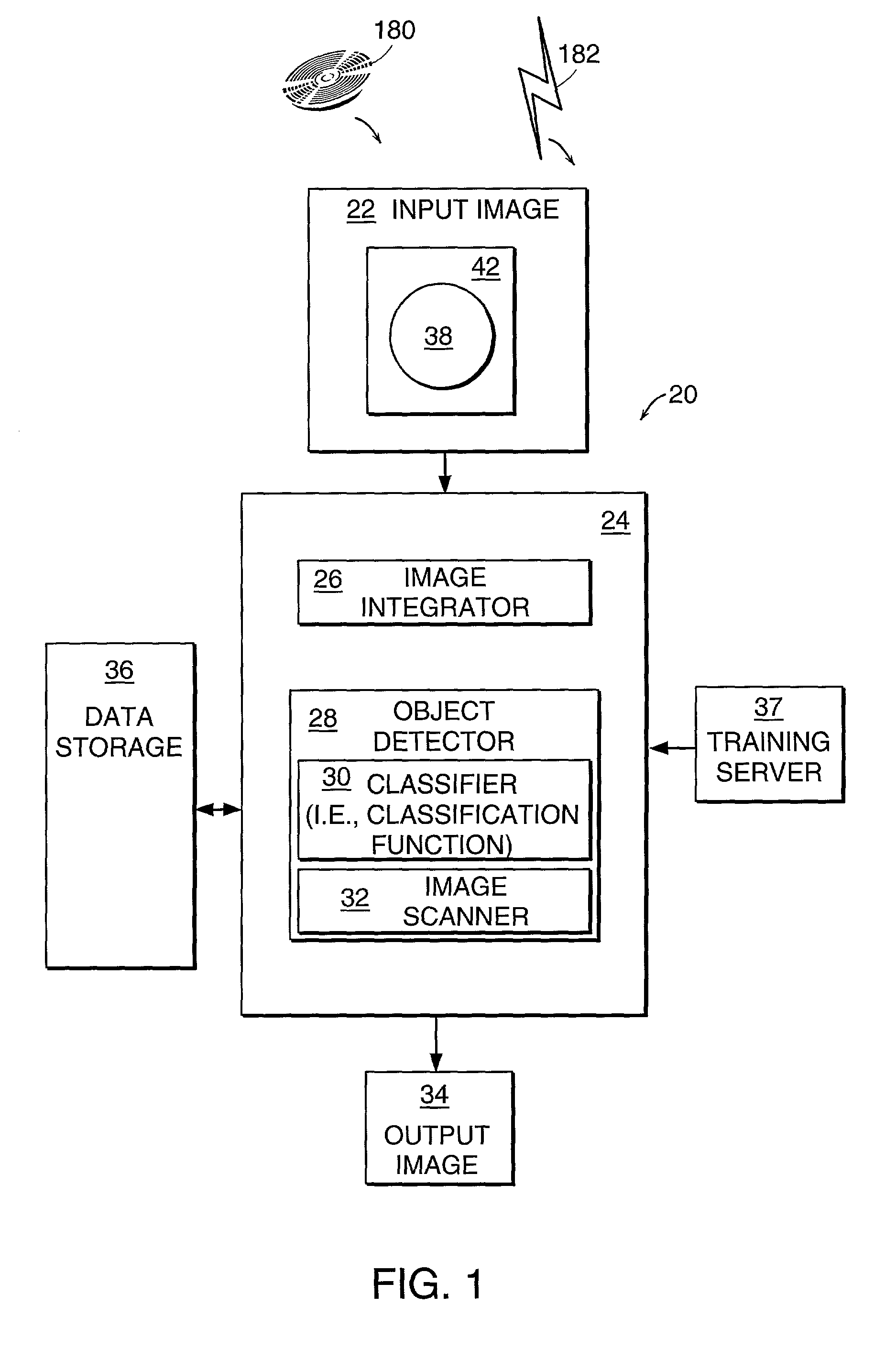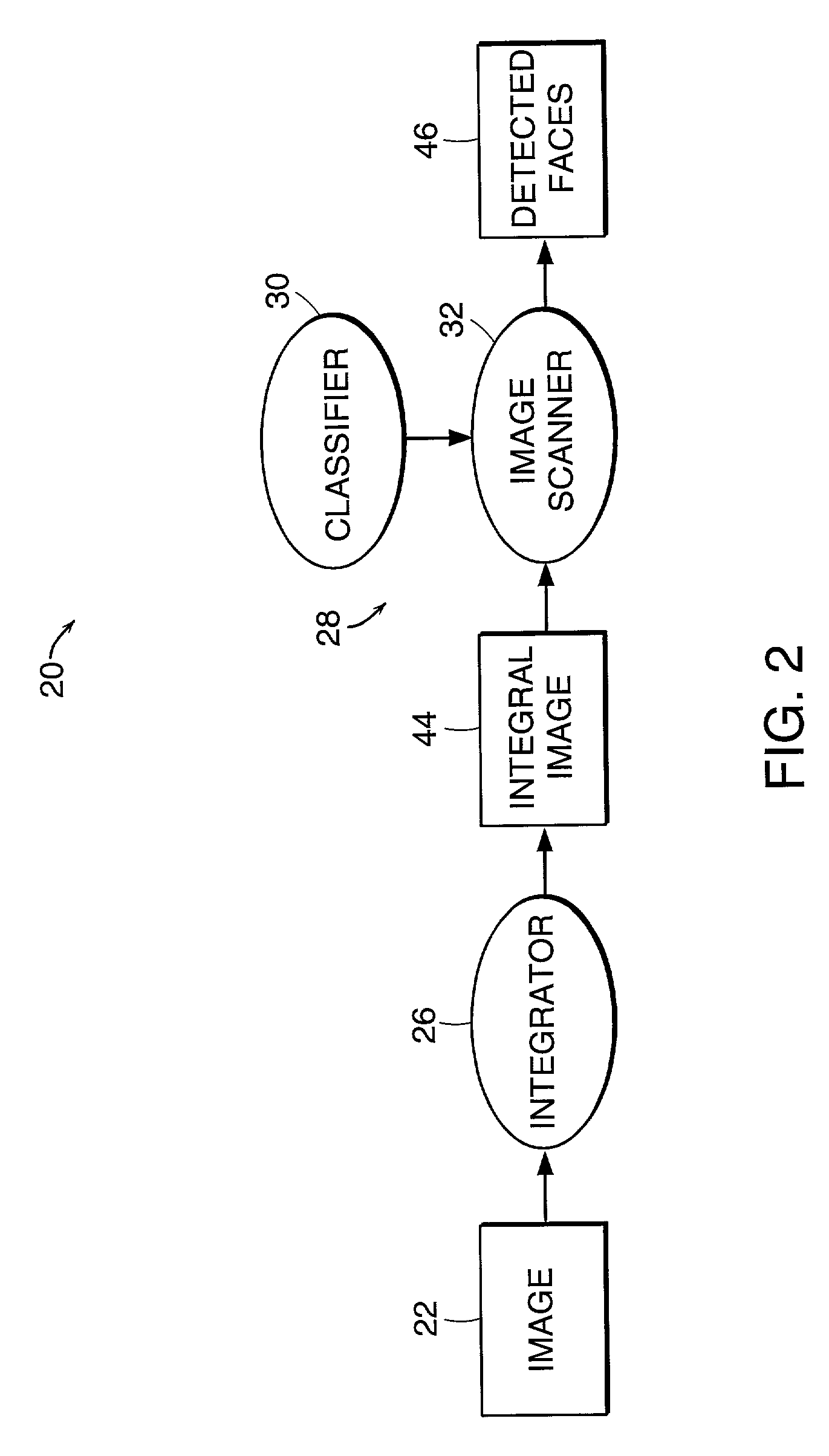Method and system for object detection in digital images
a technology of object detection and digital images, applied in the field of method and system for object detection in digital images, can solve problems such as large amount of work, and achieve the effects of reducing bandwidth, increasing quality, and being more powerful and efficien
- Summary
- Abstract
- Description
- Claims
- Application Information
AI Technical Summary
Benefits of technology
Problems solved by technology
Method used
Image
Examples
Embodiment Construction
[0036]A description of preferred embodiments of the invention follows.
[0037]FIG. 1 is a block diagram of an object detection system 20 according to the present invention. The object detection system 20 includes a digital processor 24 and data storage 36 and is used to detect one or more instances of certain objects (i.e., predefined category of objects). The digital processor 24 hosts and executes an image integrator 26 and an object detector 28 in working memory. The input image 22 is a digital image composed of bits (i.e., pixels) based on a photographic image, an image from a video, a computer created image, or other digital image. The output image 34 is a digital image composed of bits based on the input image 22 with highlighting that indicates the detected instances 38 of objects.
[0038]The input image 22 includes an object representation (i.e., instance) 38 of an object displayed in a subwindow 42 of image 22. The object representation 38 is a recognizable instance of the obje...
PUM
 Login to View More
Login to View More Abstract
Description
Claims
Application Information
 Login to View More
Login to View More - R&D
- Intellectual Property
- Life Sciences
- Materials
- Tech Scout
- Unparalleled Data Quality
- Higher Quality Content
- 60% Fewer Hallucinations
Browse by: Latest US Patents, China's latest patents, Technical Efficacy Thesaurus, Application Domain, Technology Topic, Popular Technical Reports.
© 2025 PatSnap. All rights reserved.Legal|Privacy policy|Modern Slavery Act Transparency Statement|Sitemap|About US| Contact US: help@patsnap.com



